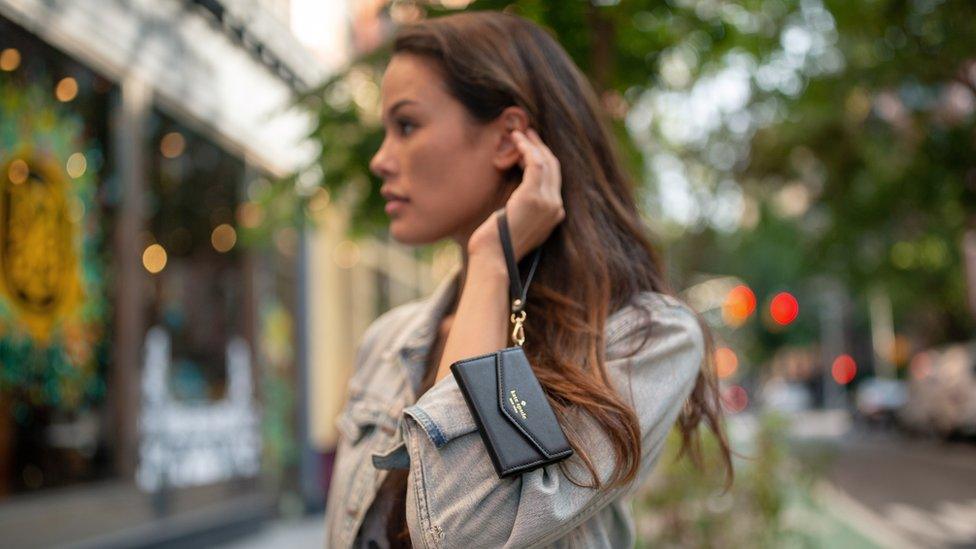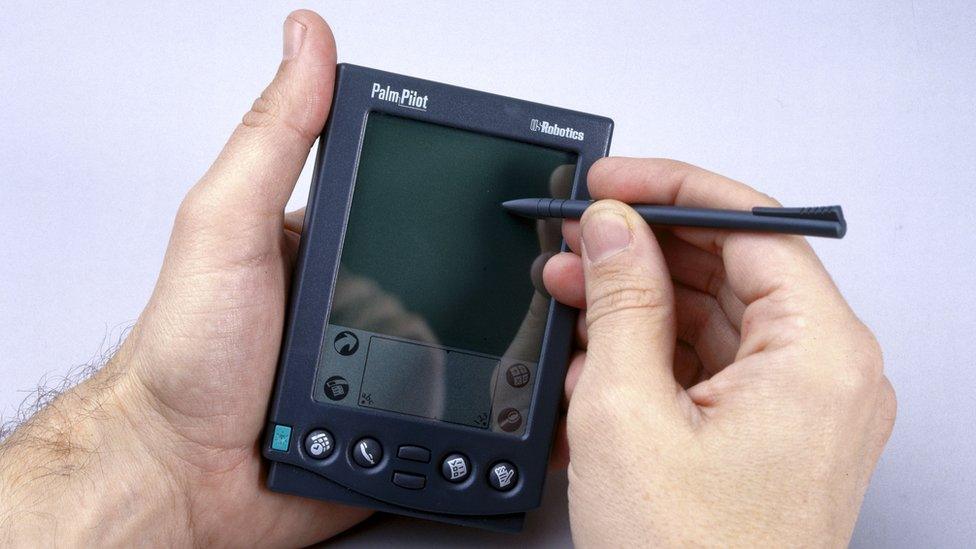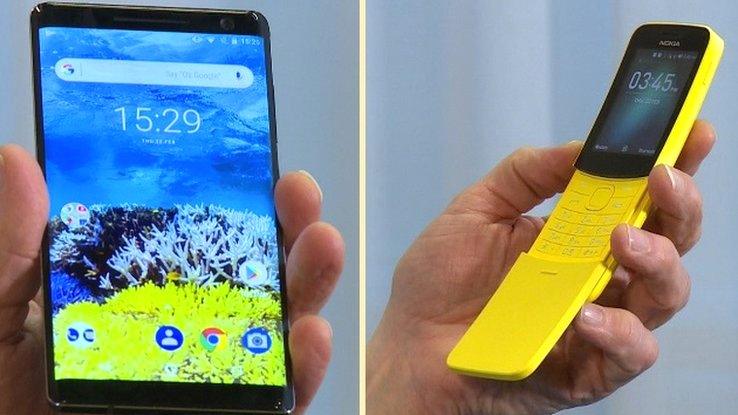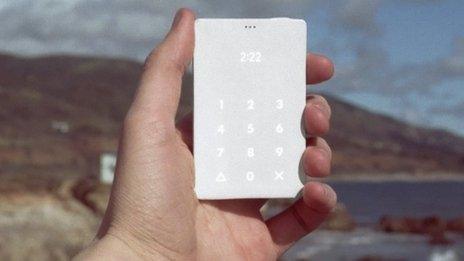Tiny Palm smartphone baffles gadget fans
- Published

US basketball player Stephen Curry is one of the ambassadors for the new Palm phone
A tiny Android smartphone designed to be a "companion phone" to a full-sized device has been launched in the US - using the brand name Palm.
The handset is the size of a credit card and has two cameras but no headphone jack or wireless charging.
It aims to help people take a break from their main phone, the firm said, despite being a fully functioning smartphone in its own right.
It has been greeted with bemusement by tech commentators and on social media.
The device will cost $349 (£263) and will be available in the US, on the Verizon network only, from November.
It is described in its marketing material as "a fully connected product that is in sync with your existing smartphone, so all of your connectivity can go where your smartphone can't".
It has the support of US basketball player Stephen (Steph) Curry who tweeted that he was "hyped to bring Palm back".
Fashion brand Kate Spade has also designed a bespoke case for the small handset.

Analyst Ben Wood from CCS Insight said it was "certainly an ambitious move" by the San Francisco start-up, which licensed the Palm brand from owner TCL.
"Small, so-called companion phones have been tried in the past and have not really captured consumers' imagination," he told the BBC.
He said that it differed from other "second" phones because it was not reliant on Bluetooth to connect it to the parent device.
Mr Wood added that he didn't think nostalgia for the 1990s Palm brand would be enough to drive sales.

Palm Pilot digital assistants were popular in the late 1990s and early 2000s
"The Palm brand is perfectly suited to a product that fits in the palm of your hand," he said.
"Beyond that, I doubt there is much brand equity left in Palm other than for uber-geeks."
Dieter Bohn, writing for website the Verge, external, described the Palm as "a weird little thing".
"So here's a phone that saves you from your phone. But what saves you from your Palm? Presumably, another even smaller phone...." noted Andrew Orlowski in the Register, external.
Allow X content?
This article contains content provided by X. We ask for your permission before anything is loaded, as they may be using cookies and other technologies. You may want to read X’s cookie policy, external and privacy policy, external before accepting. To view this content choose ‘accept and continue’.
- Published25 February 2018

- Published15 November 2016
